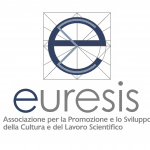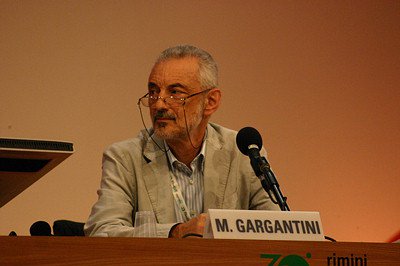Ready, set, ..life!
‘In 1953 Stanley Miller, who had just graduated from Chicago University, carried out the first experiment to shed light on the chemical reactions thought to have occurred on the primordial Earth. A mixture of methane, ammonium, hydrogen (probably components of the Earth’s atmosphere about 3 and a half billion years ago) and water (to simulate the primitive ocean) was bombarded with electrical charges (corresponding to the frequent lightning storms of the time). In these conditions, he obtained a mixture of organic compounds including some natural amino-acids that represent the basic components of proteins. The enthusiasm these experiments caused in the scientific world was beyond all belief and the news travelled fast around the world. The mystery of the origin of life looked close to being solved. In the wake of Miller’s success, numerous researchers went into action, achieving further interesting results like the formation of a series of nitrogen bases required for the structuring of Dna. After 15 years of intense effort, during which it was demonstrated that, given the conditions our planet when the first life forms began to appear, certain basic components of life could have formed spontaneously, no assembly of these prebiotic compounds was ever observed to indicate the presence of organisms, not even the most elementary. Even after Miller’s experiment, a big question mark remained: how did the big step occur from chemical and prebiotic compounds to biological systems able to reproduce themselves spontaneously? The aim of the exhibition “Ready, Set…………Life! (Documents and ideas on the origin of life in the Universe)”, promoted by the Euresis Association, and intended as the first of three appointments, is to try and go over the road, starting from the extreme confines of space and time right up to that wonderful event which was the appearance of life on Earth. From the furthest galaxies, at the utmost limits of space accessible to our modern instruments, back to our solar system and our Earth, accompanied by its faithful satellite. This “story” according to the most currently accepted theories, began with the expansion of matter and energy starting with a condition of unimaginable density and temperature. After over ten billion years, something incredible occurred – matter took on life. The first part of the exhibition explains the history of the Universe, from its origins up to the creation of chemical elements, ingredients required for everything that followed. The visitor encounters, after passing through a tunnel 12 metres long which represents the history of the universe, the first panel which, in a game of proportions compresses 15 billion years (more or less the age of the universe) into a single calendar year, where 00 of January 1st represents the big bang and the present is at 12 pm of December 31st; the first thing that strikes the visitor is that the first human beings appeared after 10 pm on December 31st – that is exactly how long the Universe had to wait before it was finally able to take stock of its own existence. From hereon an incredible combination of events is presented together with a series of strange coincidences that continue to allow life to exist. Moving ahead, one comes up against the problem of the organisation of simple molecules in living organisms. Beyond the knowledge of constituent elements, an attempt is thus made to penetrate inside the very special logic which is at the bottom of how these work and are perpetuated. At the end of the road, having gained an awareness of the complexity of the factors at play, the last alternative is reached: is the appearance of life an inevitable occurrence in the event of the surrounding chemical-physical conditions being favourable, or is it an event that occurred outside the bounds of any theory of probability? To be quite truthful, both possibilities give rise, in turn, to new queries. If life is a necessary event, this means that the tendency to evolve to such heights of complexity is irresistibly contained within matter. If, on the other hand, the appearance of life is an accidental event, one can only ask oneself where the suggestion came from that led it to successfully cover all the innumerable and improbable stages that resulted in living beings. Faced with the provocation launched by reality, mankind responds or retreats. “The more the Universe appears understandable, the more it seems without purpose” (S. Weinberg, The first three minutes). Says Sir John Eccles: ‘My idea is that in the origin and in the history of the Universe, there is a great design. We are not simply the result of accident and need, but rather we play a central role in the great cosmic drama” (The mystery of man).’











